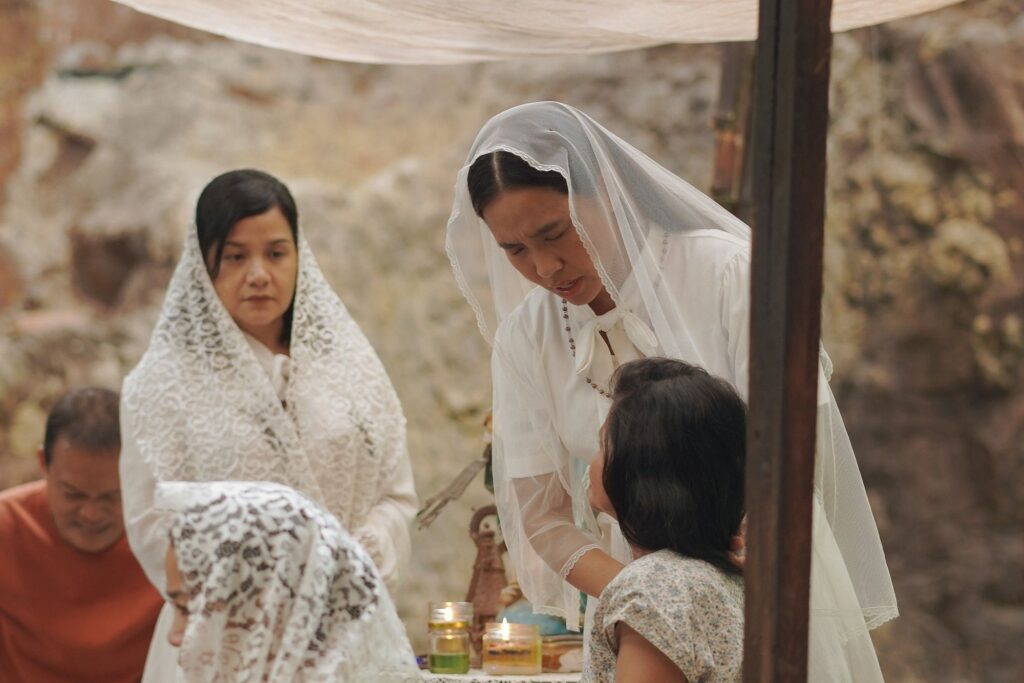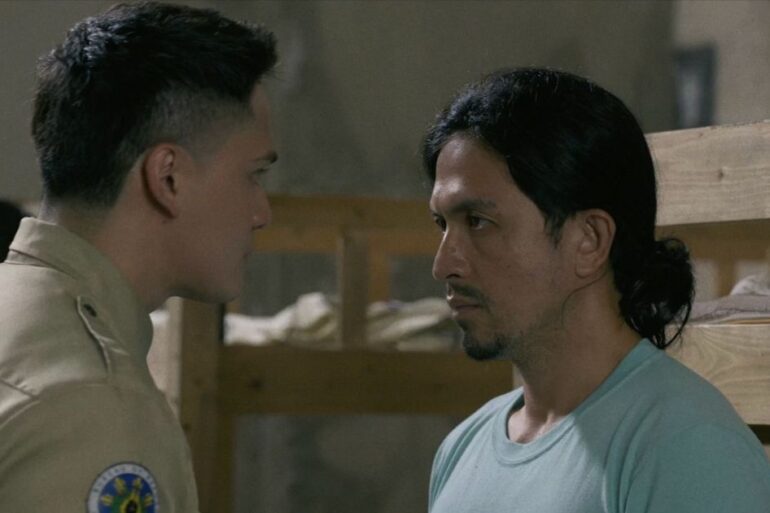The film adaptation of the musical that was a reimagining of the Nora Aunor film classic has the audacity to blur the lines between theater and film—and succeeds.
In July, the first five films to make it to the official roster of the Metro Manila Film Festival’s 50th year was announced. On the list was Isang Himala, the film adaptation of the 2018 musical that reimagined the 1982 Nora Aunor classic.
For director Pepe Diokno and executive producer Madonna Tarrayo, it would be a two-pronged opportunity to do something different for Philippine cinema: reintroduce the movie musical as a film and provide a larger stage for the theater community. With National Artist for Film Ricky Lee (who wrote the original Himala), and composer / lyricist Vincent A. De Jesus, who both worked on the musical and are part of the film’s creative team, their cinematic vision became reality. The result is a compelling and powerful piece that provokes thought and conversation about religion, society, and human nature. As Diokno explains it, “What is the hubris that has led us here?”

The result is a compelling and powerful piece that provokes thought and conversation about religion, society, and human nature. As Diokno explains it, “What is the hubris that has led us here?”
I caught the first of two block screenings of Isang Himala hosted by Rep. Toff de Venecia. His theater company The Sandbox Collective, together with 9Works Theatrical, first staged Himala: Isang Musikal in 2018, and again in 2019. It went on to win eight Gawad Buhay awards for acting and creatives. The screening was followed by a short talkback session with Diokno, Lee, De Jesus, Tarrayo, cinematographer Carlo Mendoza, 2024 MMFF Best Supporting Actress Kakki Teodoro, and fellow cast members David Ezra and Vic Robinson among others.
Related story: Bobby Garcia’s legacy is reflected in an entire generation of actors he mentored and inspired
Related story: For Lea Salonga and Dolly de Leon, the call of the stage is a chance to explore the human condition

From the film’s opening scene, it is clear that Diokno saw the town of Cupang, where the film is set, as a world of its own. Shot completely on a soundstage, he blurs the lines between theater and film. He replicates his visionary approach to filmmaking, as seen in his award-winning turn in Gomburza, in Isang Himala.
He peels back the layers of society down to its bare, naked, twisted nature with nary a scene out of place. Straddling both worlds, each scene feels raw, gritty, and deliberate. Diokno’s use of “boxing in his characters” as a cinematic device creatively illustrated the limitations of the human mind. Lee encourages a rewatch or two, to pick up on the complex nuances of this retelling.

As cinematographer, Mendoza picks up on Diokno’s vision, approaching it as “expressionistic naturalism.” He “creates sunlight” to anchor his lighting design, letting it wax and wane alongside its character’s individual and collective story arcs. A favorite, and I do have to agree, is the scene where Nimia (Teodoro) and Elsa’s (Aicelle Santos) reconcile over their friend Chayong’s grave, where the light shifts from a deep blue to a sunny yellow. What lingers constantly is a sense of foreboding, amplified by the religious frenzy unfolding onscreen, coming to a head in the film’s climactic final moments.
One bold move that Isang Himala makes, moreso as an entry to the MMFF, is its cast of thespians— many of whom have never acted on film before. They did not disappoint, delivering compelling performances, while also singing all their songs live.
Aicelle Santos as Elsa, the central figure to Cupang’s undoing, is moving in her vulnerability, with her naivete just simmering below the surface. David Ezra, as the filmmaker Orly, Bituin Escalante, as Elsa’s adoptive mother Saling, and Neomi Gonzales, as her childhood friend Chayong, were balancing, yet conflicted, counterpoints to Santos. The standout performance, though, belongs to Kakki Teodoro’s Nimia, the prostitute with a heart of gold. Teodoro’s portrayal is audacious and brave, owning the screen in every scene she is in, earning her a well-deserved MMFF Best Supporting Actress win.


It is unfortunate to hear though that, as of this writing, Isang Himala was down to screening in just 10 cinemas for the Metro Manila Film Festival. The hope is the film’s five trophies, and the positive reviews from audiences and critics alike will help buoy interest, and gain more screen time in the days ahead. And this is a movie that deserves that, if only to encourage more pioneering filmmakers to go off the beaten path and create something different.
A film that challenges its audience to really dig deep. To ask the big questions, and through conversation, find some version of an answer.
What Isang Himala does without trying is to reintroduce Himala to a younger generation. Presented in a way that they can connect with. Maybe serendipity had a part in it, with the success of stage-to-film remakes of Mamma Mia, and most recently, Wicked. This homegrown gem proves its mettle in holding space alongside them. Akin to a poetic tribute, scenes from the original film made a “cameo” as clips seen through Orly’s lens.
Related story: REVIEW: ‘Wicked 1’ hits all the right notes
Related story: The stories we tell, according to director Ramona Diaz
In a cinema landscape filled with big action sequences and star power, it is a rare feat when a film like Isang Himala makes it into a mainstream festival. A film that challenges its audience to really dig deep. To ask the big questions, and through conversation, find some version of an answer.
Both Diokno and Lee agree that the continued relevance of this story lies in the fact that societal norms, and all its woes, have barely changed. Somewhere in the two hours plus running time lies an apt response to Diokno’s quandary: at what cost, hubris?






